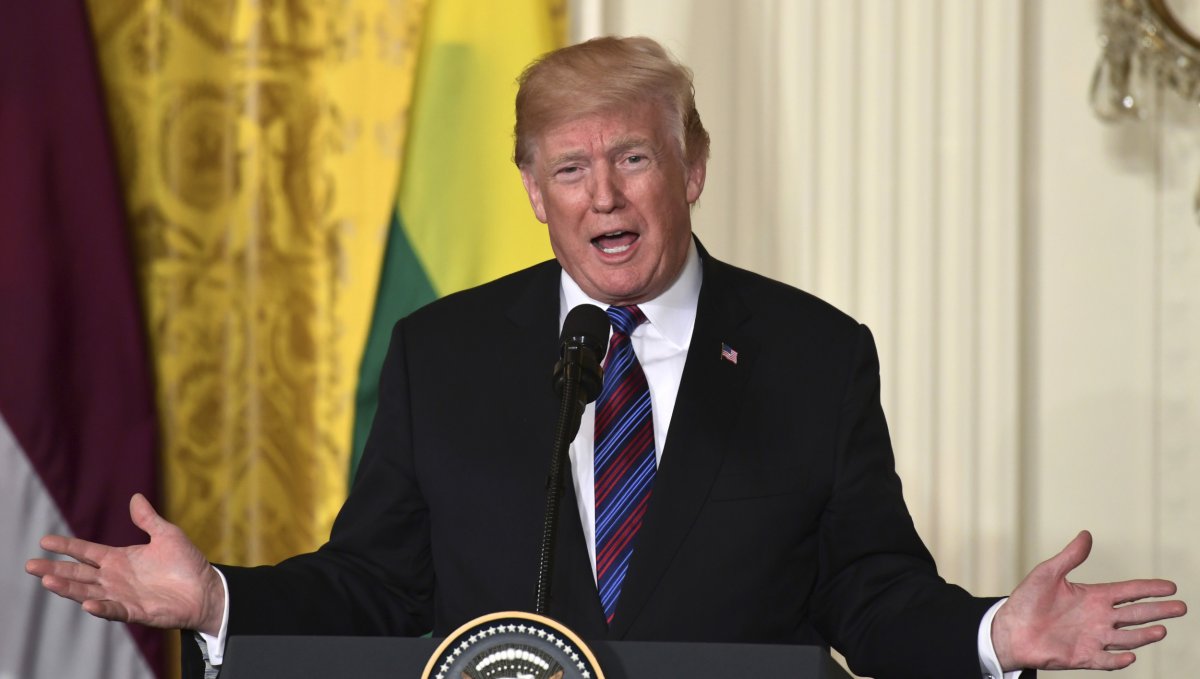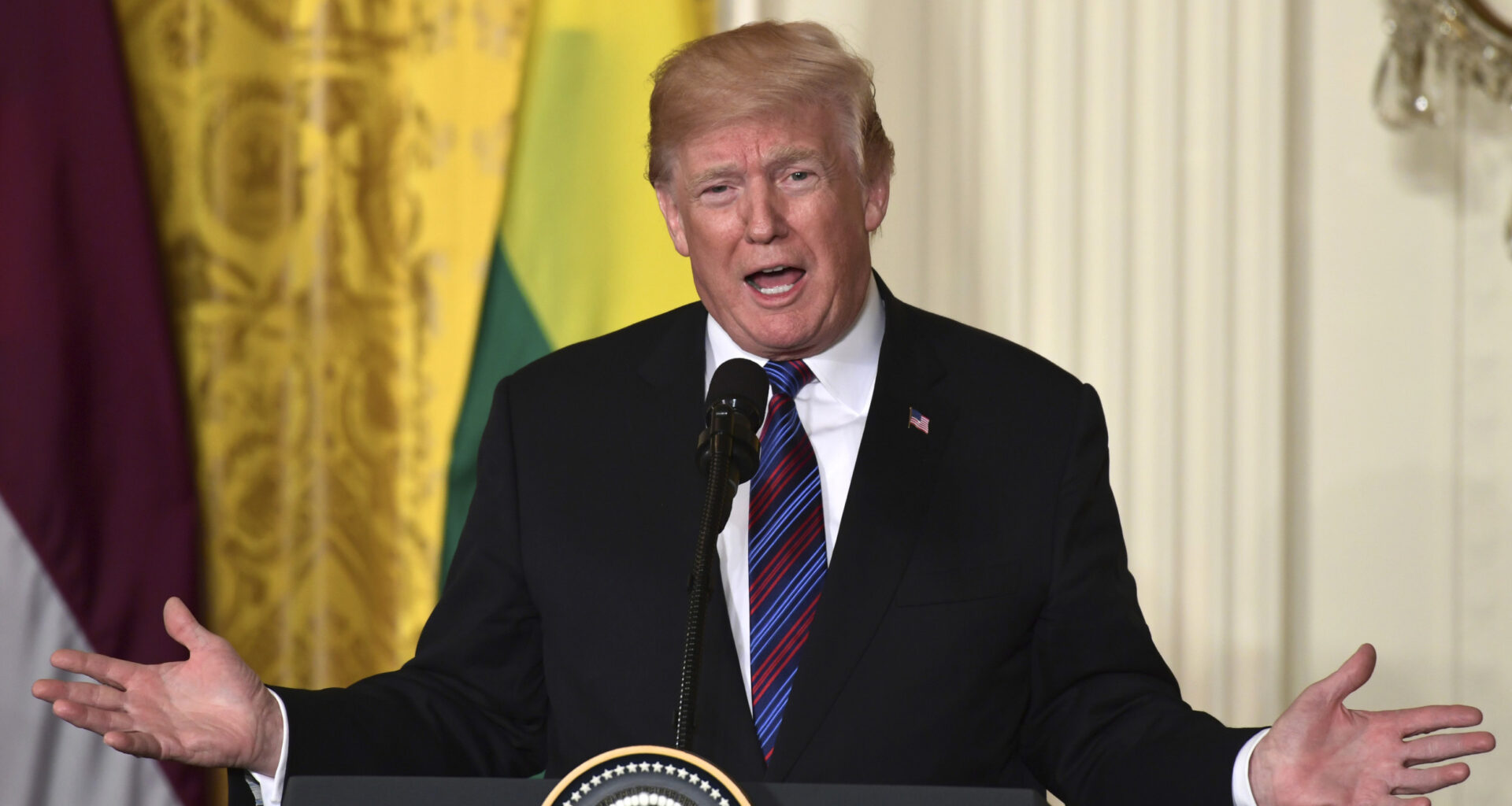In the days after Donald Trump won the election, securing his return to the White House early next year, Europe’s NATO members were nervous. Anxious and wary, yes, but still striving for public optimism.
Remarks from the Republican in the past may have been “disturbing,” Estonia’s defense minister, Hanno Pevkur, told Newsweek on the sidelines of the IISS Prague Defence Summit in the Czech Republic over the weekend. But he quickly added: “I’m not so pessimistic as many are.”
The president-elect’s return puts two big questions over the heads of NATO’s European members: how much Washington will continue to carry much of the burden for its allies, and what will happen to the military aid funneled into Ukraine.
Trump has not minced his words in his critiques of the alliance. He appeared to green light Russian attacks on NATO states he said were not contributing enough funds to the alliance earlier this year, in remarks denounced by President Joe Biden‘s administration as “appalling and unhinged.”

President Donald Trump speaks during a news conference with Estonian President Kersti Kaljulaid, Latvian President Raimonds Vejonis, and Lithuanian President Dalia Grybauskaite, at the White House in Washington, D.C. on Tuesday, April 3, 2018. The…
President Donald Trump speaks during a news conference with Estonian President Kersti Kaljulaid, Latvian President Raimonds Vejonis, and Lithuanian President Dalia Grybauskaite, at the White House in Washington, D.C. on Tuesday, April 3, 2018. The president-elect sweeping back into power poses big questions for European members of NATO.
More
AP Photo/Susan Walsh
He also pledged to end military aid for Ukraine ahead of votes being counted across the U.S. Kyiv is heavily dependent on its allies for weapons and equipment, and it would take a mammoth effort from Europe to make up the deficit left by the U.S. if Washington’s aid evaporated.
Newsweek has reached out to Donald Trump’s team and to NATO for comment via email.
Defense spending in Europe dropped off after the end of the Cold War, and has been slow to build back up.
Each NATO member is asked to dedicate 2 percent of the country’s GDP to defense. For years, many nations had not met this threshold, which is not enforced by the alliance. Now, roughly two thirds of countries will likely reach 2 percent by the end of the year.
The three Baltic states of Estonia, Lithuania and Latvia, along with other countries in Eastern Europe, have steamed ahead of swathes of western and southern Europe. Estonia’s defense spending is hovering at around 3.4 percent of its GDP, with plans to hike this to 3.7 percent by 2026.
Lithuania said in March it would raise defense spending to 3 percent from 2025. But defense minister Laurynas Kasčiūnas said in September that Vilnius should think about raising funding for the military to 4 percent to finance new long-range air defenses and other equipment.
Trump “always comes with strategic uncertainty,” Kasčiūnas said in Prague over the weekend. “It’s his modus operandi.”
U.S. battalion-sized forces arrived in the Baltic state under the previous Trump administration in 2019, Kasčiūnas said.
The difference this time, Kasčiūnas said, will be the team encircling the president-elect. When Trump was elected in 2016, the people who had his ear broadly followed the policy style of Republican president Ronald Reagan, which benefited the eastern flank and the Baltics, Kasčiūnas said.
The “crucial question” is who will make up Trump’s inner circle now, he added. “It very much depends on that.”
Estonia and Latvia are pressed up against Russia’s western border for hundreds of miles, while Lithuania borders Russia’s Kaliningrad exclave—home to its Baltic Sea Fleet—and Belarus, whose president, Aleksandr Lukashenko, is Russian President Vladimir Putin‘s staunch ally. Russia used Belarusian territory to launch operations into Ukraine at the start of the full-scale invasion in February 2022.
There may be a bright side. The European mission to drive up defense spending is one the continent’s officials are united in, but it’s up for debate whether Europe’s NATO members will be able to build up the capacity they assess they need.
In doubt, too, is how quickly they can do it, as warnings from the most senior military and political figures get more urgent. But Trump, officials and experts speculate, may tell European countries in no uncertain terms that defense spending must rise and give that final push some politicians still need.
Czech President Petr Pavel, also speaking at the summit, said on Friday that European nations were always going to have to do more to shore up their own defense, but “with President Trump, we will probably have to do it faster.”
“With the experience of his first term, when he came to NATO with a shocking message that the United States would not defend anyone who is not paying enough, we were shocked because we were not used to that kind of approach,” Pavel said.
“Of course, the message was absolutely right,” the Czech president added. “Only predecessors of Donald Trump presented it in a much more comfortable way. That was the reason why, most probably, that European allies were not listening with such attention.”
During Trump’s first time in office, Lithuania’s Kasčiūnas said “we built this moral wall against him.”
“I understand that, but it was maybe not very good for dealing with him,” Kasčiūnas said. There will be a more pragmatic approach shaping how Europe’s NATO states interact with the new U.S. leader from January, he added. “We need to sit together to think about how to work with him.”
For now, it is too early to say how rhetoric from the campaign trail will translate into official policy, Estonia’s Pevkur told Newsweek. “Campaigning is one thing,” he added. “Real life is a bit different.”
It was the same the last time Trump was in the Oval Office, Pevkur said. “We saw that actually the foreign and defense policy actually wasn’t so bad.”
“I’ve been talking to many Republicans, not only on the hill but also on Trump’s team, or in Trump’s team,” Pevkur said. On issues such as how to handle the more than two and a half years of war in Ukraine, the Estonian defense minister said: “I believe Trump doesn’t want to be on the loser side.”
Trump has repeatedly said he would put a stop to the war in Ukraine “within 24 hours” should he be reinstalled in the White House. He has not divulged how he hopes to swiftly end the largest land war in Europe since World War II.
Advisers to the president-elect have signaled that a future deal may concede parts of Russian-controlled Ukraine to Moscow, delaying Kyiv’s membership to NATO for at least two decades, and handing Europe long-term responsibility for protecting the eastern flank on the continent and hundreds of miles of demilitarized territory, Pavel said. Similar reports, suggesting the grueling conflict could become frozen, have appeared in the media in recent days.
Officials widely agree the timeline is unrealistic, but believe Trump will reach some kind of deal with Putin, with whom the president-elect has hailed his “very good relationship.” Former Russian President Dmitry Medvedev, who remains a prominent and hawkish figure in Russian politics, said the Republican was a “business owner to the core,” describing this as a “quality that is useful for us.”
“Let’s wait and see what happens in January,” Kremlin spokesperson Dmitry Peskov told reporters on Wednesday after Trump’s election win.
Visiting Budapest on Thursday, Ukrainian leader Volodymyr Zelensky said that he believed Trump “really wants a quick decision” to end the war, but this “doesn’t mean that it will happen this way.”
